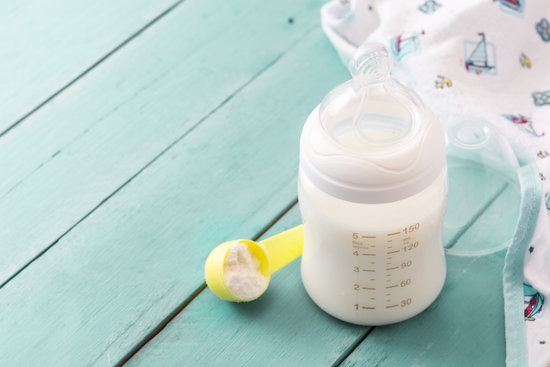Babies And Lactose Intolerance
Lactose intolerance Is a condition in which the body produces insufficient amount of an enzyme called lactase that is required for digesting lactose, a sugar that is present in milk. So, though It is always advised that a baby should be exclusively breastfed for the first six months of his/her life to meet all the nutritional requirements for normal and healthy growth, a few infants and especially premature infants experience lactose intolerance. And while lactose intolerance in infants is quite rare, it is challenging nonetheless. Hence, here’s all you need to know about this condition.
Primary/Secondary Lactose Intolerance
Lactose intolerance can be caused due to faulty genetics, family history, gastric infections, as a side effect of diseases like celiac disease or allergy to certain foods, There are two types of lactose intolerance; primary lactose intolerance and secondary lactose intolerance.
Primary lactose intolerance involves a total absence of lactase which is a very critical condition for an infant to survive because of mal-absorption and dehydration caused due to severe diarrhoea. In this case, an infant is born with lactose intolerance.
On the other hand, secondary lactose intolerance is a temporary condition caused due to an injury to the infant’s gut cells which produces lactase. Once the injury is cured the infant can digest lactose, which is milk.
Symptoms Of Lactose Intolerance
Infants with lactose intolerance always shows the symptoms of stomach ache, loose stools, stomach upset, diarrhoea, frequent gastric reflux, abdominal cramps, bloating, lack of sleep, crying often, low weight gain, irritability and uneasiness.
If the mentioned symptoms are visible 30 minutes to two hours after feeding the baby then he/she is lactose intolerant. Lactose intolerance is a condition which cannot be treated or prevented but can be controlled by choosing lactose-free foods or lactose free infant formula.
Types Of Formula For Infants
Lactose-Free Formula Food
This is specially designed for the babies born with lactose intolerance/ primary lactose intolerance. It is the perfect food source for babies who cannot digest lactose based foods.
Elemental Formula Food
Elemental formula is another option for lactose intolerant infants. This is prepared from protein hydrolysate which is easy to digest and thus provides proper nutrition.
Soya Based Formula Food
This formula can be fed to babies suffering from lactose intolerance. Soya based milk formula s the best option which provides essential nutrients in similar composition as to breast milk or cow’s milk. However, this formula should be tried only after consulting with your specialist or paediatric nutritionist.
Gentle Formula Food
This formula contains less amount of lactose, thus is can be recommended for babies with secondary lactose intolerance.
Free Your Baby From Diaper Rash
All parents strive to keep their new-born comfortable and protected and diapers is one such product that immensely helps new parents to achieve this. Diapers have become such a part and parcel of daily new-born care that the area comprising the genitalia and bum of the baby came to be known as ‘diaper area’ and the rash that develops in that area ( most commonly due to the injudicious use of diapers) as diaper rash.
Managing Diaper Rash And Infections
To avoid diaper rash, apply a diaper cream with the consistency of a petrolatum gel so that the cream acts as a barrier and protects the baby’s delicate skin from irritant effects of urine and stool and also helps in keeping the baby’s skin healthy. If you are using diapers, ensure good quality diapers and make sure it is changed every four-six hours and most importantly, promptly change the diaper even if it is slightly soiled.
Some diapers also have an indicator which changes colour when the baby passes urine or stool. It is very important that mothers clean the genitalia area first and then proceed to cleaning the stool area, especially with girls. The direction of cleaning needs to be from front to back otherwise there is a higher risk of urine infection.
Treating Diaper Rash
Some rashes involve only the stool area and bum of the baby. Most of them respond to good diaper creams (with zinc oxide), good care and lots of diaper-free time. Some rashes involve the groin, genitalia and also produce rashes in nearby areas which are not in continuity with the original rash. These are known as satellite lesions and use of anti-fungal creams can take care of the rash.
Some of the rashes get infected because it is easy for any infection to set in whenever there is any minute break in the skin. Antibacterial creams have to be used in such scenarios. It is in rare cases that the infection can cause fever and more problems for the baby, thus requiring more medicines.
